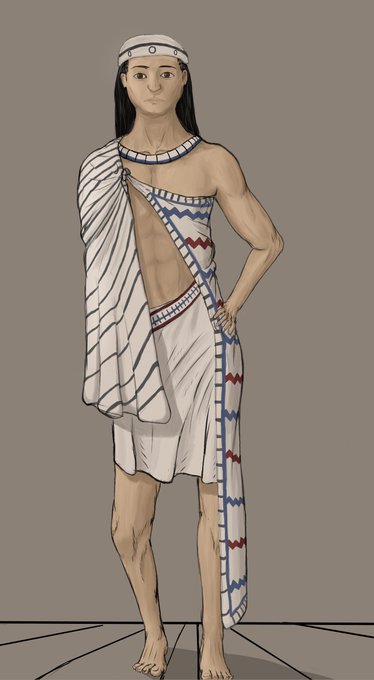Trying a new way of shading/coloring, again.
Also drawing figures from an egyptian mural, WIP
And just like Odysseus, Hittites too consulted ghosts for advice and knowledge about the future.
Unlike the homeric heroes, the hittites only allowed the most experienced experts to conduct necromantic rites due to the significant risks involved in raising the dead.
Instead, royal funerary rites were more similar to those described in the Illiad:
A King/Queen's death was followed by funerary rites lasting 2 weeks, involving libations, sacrifice of oxen, and food offerings and a great pyre in the evening.
Todays late night sketch:
No, this is not a hittite, nor a roman, this is the Cheyenne warrior "Alights on the Cloud" who somehow aquired an iron scale armor as well as a sword. There are no photos of it.
In 1852 he died in battle against the Pawnee when an arrow hit his face.
The sailors were now forced to fend off Icebear attacks, but at least they provided a food source.
After several weeks of this, a storm crushed the remaining ships on, forcing the survivors unto the ice.
It was September 30.
The winter hasnt even started yet.
Time for some obscure very local history:
How one accident can end an Island's whaling industry and a story of survival against all odds, the story of Captain Kat.
@GordonDoherty Pointy Helmets seem to be quite common across the ANE, possibly because of their relative usefulness in shield-formation- warfare as well as being a good defence against arrows fired form above (sieges)
For border defence, a system of fortified garrison-settlements, watchtowers and fortresses was used, commanded by a governor-commander somewhat similar to later byzantine defensive measures.
Defensive Architecture was well-developed by the LBA and major cities were very fortified
The Chariotry formed the elite of the Army, using heavier 3-man chariots (Suitable for the small valleys of Anatolia) likely manned by a landowning elite.
Transport of maintenance of horses and chariots was very costly, which only proves how valuable they were in the field.

























